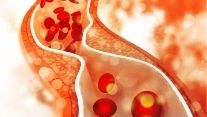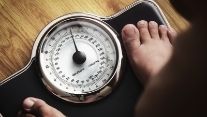Calcium is an essential mineral needed by our body to maintain healthy bones and to carry out necessary functions. Most of this calcium is stored in our teeth and bones, where it supports their hardness and structure. A sufficient amount of it would reduce the risk of osteoporosis.
Calcium is a necessity as our body requires it for muscle movement and for our nerves to transmit messages from the brain to the rest of the body.
It is also needed to release enzymes, hormones and to transport blood via blood vessels throughout the body. All these mentioned functions are of importance as they affect every other task that occurs in the human body.
Before going into more details, let’s first understand the risk factors of osteoporosis and how it contributes to chronic medical conditions.
Risk Factors of Osteoporosis
Various factors, such as medical conditions, race, age, and lifestyle choice, increase the chances of individuals developing osteoporosis. However, there are some uncontrollable “factors” for osteoporosis, which include:
- Gender– women have more probability of developing osteoporosis in comparison to men.
- Age– as age progresses so, does the risk of getting osteoporosis.
- Race– Caucasian and Asian people are at more risk of developing this disease
- Family history– any sibling or parent who has suffered from this disease makes you more susceptible to it.
- Body frame size– men and women with small body frames are at risk because they may have a lower bone mass to draw from as they continue aging.
Medical Conditions and the Risk of Osteoporosis
People who have medical problems, such as the following, are more at risk of developing osteoporosis:
- Cancer
- Lupus
- Multiple myeloma
- Rheumatoid arthritis
- Liver or kidney disease
- Celiac disease
- Inflammatory bowel disease
To prevent the risk of getting diagnosed with osteoporosis, you must get good nutrition and regular exercise. Experts have suggested regulating your calcium intake according to the recommended amounts.
How Much Calcium Do I Need?
According to the Office of Dietary Supplements (ODS), the following are the suitable amounts of calcium that are should be consumed according to the specified age:
- 71 years and above: need about 1,200 mg
- 51 – 70 years: 1,000 mg for males and 1,200 mg for females
- 19 – 50 years: both male and female require 1,000 mg
- 9 – 18 years: individuals require 1,300 mg
- 4 – 8 years: require 1,000 mg
- 1 – 3 years: require up to 700 mg
- 7 – 12 months: need 260 mg
- 0 – 6 months: should take 200 milligrams (mg)
Effects of Calcium Deficiency
The following conditions may occur due to low calcium levels (or hypokalemia):
- Anorexia
- Overconsumption of magnesium
- Development of cancer
- Kidney failure
- Celiac and Crohn’s disease
- Pancreatitis
- Lack of the parathyroid hormone
- Long term use of laxatives
- Mercury exposure
- Vitamin D deficiency
How to Get Calcium into Your Bones?
- Get Calcium from Plant-Based Whole Food Sources
The most prominent and healthy sources of calcium are legumes and green leafy vegetables. Greens such as brussels sprouts, collards, kale, broccoli, Swiss chards, and mustard greens contain highly absorbable calcium and other necessary nutrients.
Beans contain a large percentage of calcium. About 100 milligrams of calcium are present in a plate of baked beans. Tofu, chickpeas, and other bean products have plenty of calcium as well. Apart from calcium, these foods are also rich in the mineral magnesium. Our body utilizes this mineral along with calcium to build bones.
Calcium-fortified orange or apple juices are the best options for those looking for a very concentrated calcium source. These juices contain more than 300-500 milligrams of highly absorbable calcium per cup.
- Exercise Regularly
Exercise is a necessity for a variety of reasons, including keeping bones stronger. Active people can keep calcium in their bones, while inactive people lose calcium.
- Get Your Vitamin D Intake
Vitamin D is necessary as it controls how our body uses calcium. Fifteen minutes of sunlight each day produces the required vitamin D quantity our body needs (5 micrograms per day). You can get vitamin D from supplements if you get little to no exposure to sunlight.
How to Prevent Calcium Losses?
Getting calcium into your bones is not enough as what matters the most is keeping it in there and preventing loss. Here’s how you can achieve it:
- Avoid Excess Salt
The calcium present in the bones dissolves into the bloodstream and passes through the kidneys into the urine. Consuming foods rich in sodium (salt) increases the amount of calcium lost through the kidneys.
To avoid this, you need to reduce your sodium intake to about 2 grams per day. Avoid canned goods and snacks that have salt added in them and use less salt in your meals and at the table.
- Avoid Consuming Animal Products for Protein
Animal proteins like poultry, eggs, dairy products, fish, and red meat drain the calcium from the bones. To prevent this, you need to replace animal protein with plant proteins such as grains, beans, and vegetables that do not have this effect.
- Quit Smoking
Smoking affects the rate of calcium absorption by our body. That further leads to weaker bones and lower bone density. It also breaks down estrogen that is vital for maintaining a healthy skeleton. It is necessary to give up smoking to ensure proper calcium absorption and health.
The Final Takeaway
It is an understandable fact that our health depends solely on our dietary choices. We need to consume foods that are rich in calcium to prevent osteoporosis.
A significant shift in our lifestyle changes can help us achieve robust bone health, which will ensure the quality of life.








































